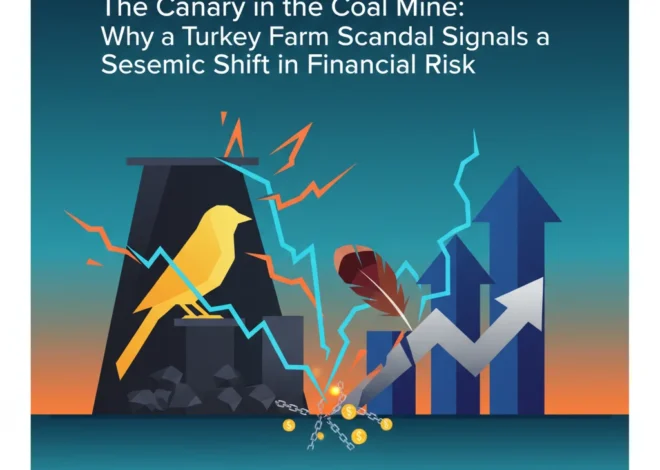
The $101 Million Question: Inside BlueCrest’s Landmark Settlement and the Battle for Investor Trust
In the high-stakes world of finance, nine-figure sums often signify blockbuster deals or soaring market valuations. But when a figure like $101 million is attached to a regulatory settlement, it tells a different story—one of conflict, consequence, and critical lessons for the entire investing ecosystem. This is the story of BlueCrest Capital Management, a once-gargantuan hedge fund, and its landmark agreement with the UK’s Financial Conduct Authority (FCA).
The firm agreed to pay a staggering £77.5 million (approximately $101 million) into a redress scheme designed to compensate investors who were allegedly disadvantaged. Yet, in a move that adds a layer of complexity to the saga, BlueCrest settled the case without formally accepting the FCA’s findings. This decision creates a fascinating gray area, leaving the industry to grapple with a crucial question: What does it mean when a firm pays the penalty but disputes the foul?
This case is more than just a headline; it’s a deep dive into the core principles of fiduciary duty, the hidden dangers of conflicts of interest, and the evolving landscape of financial regulation. For investors, finance professionals, and business leaders alike, the BlueCrest settlement is a powerful case study on the enduring importance of trust in the modern economy.
The Heart of the Matter: A Tale of Two Funds
To understand the settlement, we must first understand the FCA’s allegations. The regulator’s investigation centered on a fundamental conflict of interest at the heart of BlueCrest’s operations between 2011 and 2015. During this period, BlueCrest managed capital for external clients in its flagship fund, the BlueCrest Capital International fund (BCI). Simultaneously, it operated an internal fund, BSMA, which was open only to its partners and employees.
The FCA’s findings painted a picture of a two-tiered system where the interests of the internal fund were prioritized over those of the external investors who had entrusted BlueCrest with their capital. The primary mechanisms for this alleged favoritism were sophisticated and deeply embedded in the firm’s trading infrastructure:
- Talent Allocation: The regulator found that BlueCrest systematically moved its most promising traders from the external fund to the internal one. This talent drain allegedly left the external investors’ capital in the hands of less experienced or underperforming managers.
- Algorithmic Disadvantage: In the world of high-frequency trading, the quality of your algorithm is everything. The FCA concluded that a key trading book was replicated for both funds, but the version used for the external BCI fund was a “subtly-altered, sub-optimal” version of the one used for the internal BSMA fund. This difference, however small, could have a significant impact on returns in the fast-paced stock market.
This alleged conduct strikes at the very core of a fund manager’s responsibility. Investors place their capital with a firm based on the belief that the manager will act in their best interest—a principle known as fiduciary duty. The FCA’s case argued that BlueCrest failed to manage this glaring conflict of interest, leading to potential harm for its clients.
A Settlement Without Surrender: The Nuance of a Non-Admission
The decision to pay $101 million while simultaneously not accepting the FCA’s findings is a common but often misunderstood legal strategy. For BlueCrest, this approach offers several advantages. It allows the firm to resolve a costly and reputationally damaging investigation without the finality of a guilty verdict. An admission of wrongdoing could open the door to a flood of private lawsuits from investors, using the FCA’s own findings as evidence.
However, the FCA remains resolute. Mark Steward, the executive director of enforcement and market oversight at the time, made the regulator’s position clear. He stated that the firm’s conduct was “objectionable” and that the “significant redress” was a direct result of BlueCrest’s failure to manage its conflicts of interest fairly. According to the FCA’s official notice, the firm “failed to act with due skill, care and diligence” in a manner that put its fiduciary duty to clients at risk (source).
This “agree to disagree” conclusion highlights the immense power regulators wield. Even without a formal admission, the ability to compel a nine-figure payment sends an unmistakable message to the entire finance industry: investor protection is paramount, and conflicts of interest will be pursued vigorously.
Contextualizing the Cost: BlueCrest vs. Other Major Settlements
To appreciate the scale of the $101 million redress scheme, it’s helpful to see how it compares to other significant financial penalties and redress schemes mandated by the FCA. While not the largest on record, it represents a substantial enforcement action, particularly as it is focused on compensating investors directly rather than being a punitive fine paid to the Treasury.
Below is a table comparing the BlueCrest settlement with other notable FCA actions, illustrating the regulator’s commitment to tackling misconduct across the banking and investment sectors.
| Firm | Year | Penalty/Redress Amount | Reason for Action |
|---|---|---|---|
| Deutsche Bank | 2017 | £163 Million | Serious anti-money laundering (AML) control failings (source). |
| Barclays | 2015 | £72 Million | Poor handling of financial crime risks related to a major transaction. |
| BlueCrest Capital Management | 2020 | £77.5 Million ($101M) | Failure to manage conflicts of interest, disadvantaging external investors. |
| UBS AG | 2021 | £27.6 Million | Failings in reporting a significant number of transactions over a decade. |
This comparison underscores that the BlueCrest action is among the more significant enforcement outcomes, especially within the hedge fund industry, signaling a new level of scrutiny on operational integrity and fairness in fund management.
The Ripple Effect: Broader Implications for the Financial World
The reverberations of the BlueCrest settlement extend far beyond the firm itself, offering crucial takeaways for every stakeholder in the financial ecosystem.
For Investors: The Call for Deeper Due Diligence
This case is a powerful lesson in the importance of looking beyond performance charts. Investors must ask tough questions about a fund’s structure, transparency, and alignment of interests. Key questions include: How are star traders compensated and retained? Does the firm operate internal funds, and if so, how are conflicts of interest managed and disclosed? The era of blind trust is over; informed skepticism is the new prerequisite for successful investing.
For the Hedge Fund Industry: A Warning on Ethics and Transparency
For other fund managers, this is a clear warning. The “black box” approach to trading and talent management is no longer tenable. Regulators are increasingly sophisticated and equipped to analyze complex data and algorithms. The reputational damage from such a public rebuke can be just as costly as the financial penalty. Firms must proactively identify and mitigate potential conflicts of interest, fostering a culture where client interests are not just a legal requirement but a guiding principle.
For Regulators and the Future of Fintech
The BlueCrest case highlights the challenges regulators face in policing the ever-advancing world of financial technology. It demonstrates a growing capability to dissect complex trading systems. Looking forward, there may be a greater push for technological solutions to these problems. Could blockchain technology, for example, offer a more transparent and immutable ledger for trade allocations? This case will undoubtedly fuel the debate on how to balance fintech innovation with robust oversight to protect the integrity of the stock market and the broader economy.
Conclusion: Trust as the Ultimate Currency
The BlueCrest settlement is more than a financial transaction; it’s a referendum on the ethics of modern finance. While the firm did not admit fault, the $101 million payment to investors speaks volumes. It reaffirms a timeless principle: capital follows trust. In an industry built on managing other people’s money, the perception of fairness is as valuable as any trading strategy.
As technology continues to reshape banking, trading, and investing, this case will serve as a critical benchmark. It reminds us that behind every algorithm, every transaction, and every percentage point of return lies a fundamental duty to act in the best interests of the client. For the long-term health of our financial markets, that is a principle worth far more than $101 million.


